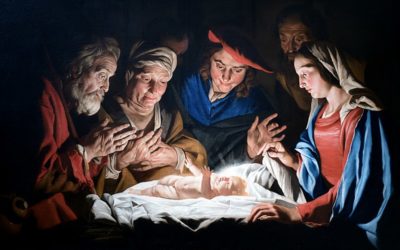At the end of June 1829, the translation of the Book of Mormon was coming to an end, and the time had arrived to find a publisher for the volume. The publication of the Book of Mormon would precede the organization of the Church and lay a foundation for it. Doctrine and Covenants 18 and 19 were given during this time period and contain rich doctrines on many important topics, including the worth of souls and the atonement of Jesus Christ.
Doctrine and Covenants 18
For the historical background on this section, click here.
The Worth of Souls
Doctrine and Covenants 18:10 declares that “the worth of souls is great in the sight of God.” Some religious groups over time have emphasized the depravity of man. Some people who do not believe in God also point out that human beings are depraved. They can point to evidence of war, murder, torture, abuse, mutilation, and other evils to support their position.
But the gospel of Jesus Christ offers hope in overcoming all these evils, and Doctrine and Covenants 18 explains how the atonement of Christ and the doctrine of repentance make it possible.
In addition, after Joseph Smith translated the Book of Mormon, Oliver Cowdery bought a copy of the Bible for Joseph and him to use in doing an inspired revision of the Old and New Testaments. During this translation process, Joseph received Moses 1, a text that amplifies what Doctrine and Covenants 18 says about the worth of souls.
In Moses 1, the Lord draws Moses “up into an exceedingly high mountain,” where they speak “face to face” (verses 1‒2). He informs Moses, “Thou art my son” (verse 4), a remarkable revelation but perhaps not one that would surprise a man who grew up in an Egyptian culture that believed the pharaohs were related to Deity. The Lord then showed Moses “the world upon which he was created . . . and the ends thereof, and all the children of men which are, and which were created” (verse 8).
The display was so spectacular, so amazing, that Moses “marveled and wondered” (verse 8). Moses could behold such wonders only because the Lord supported him through the vision. But when the vision ended “the presence of God withdrew from Moses, that his glory was not upon Moses; and Moses was left unto himself. And as he was left unto himself, he fell unto the earth” (verse 9).
Those of us who have tasted of God’s goodness—who have had spiritual moments in which we have felt of His wondrous love—have probably also had moments when we felt “left unto” ourselves. During those moments, we may feel worthless, unimportant, and abandoned.
Moses had such a time after his glorious vision, just as Joseph Smith did after his First Vision. Moses 1:10 explains “that it was for the space of many hours before Moses did again receive his natural strength.” And when he recovered enough to think, he considered what he had seen and his own weaknesses and concluded “that man is nothing, which thing I never had supposed.”
Have you ever felt that way? Have you felt that God has abandoned you, that you are not important, and that because of your weaknesses you are worthless? Then you are in good company with Moses, Joseph Smith, and virtually all of humanity. What happened next to Moses is an important lesson for us all.
During this time of weakness Moses (like Joseph) was sorely tempted by Satan (verse 12). But Moses was able to “judge between” good and evil, since God’s “Spirit hath not altogether withdrawn from” him (verse 15). Moses resisted Satan, and Satan “cried with a loud voice, and ranted upon the earth” so terribly “that Moses began to fear exceedingly” (verses 19‒20). Because fear is the opposite of faith, when Moses “began to fear, he saw the bitterness of hell.” But “calling upon God,” as Joseph Smith did in the grove, Moses “received strength” and overcame the temptation (verse 20).
At that point, “Satan began to tremble,” and while crying “with a loud voice, with weeping, and wailing, and gnashing of teeth, . . . he departed . . . from the presence of Moses, that he beheld him not” (verses 21‒22).
Moses’ example is key to us all. When we feel worthless, unimportant, and abandoned by God, Satan will tempt us, but we can cast him out of our lives by living righteously.
After Moses overcame the temptation—and not until then—the Lord blessed him with an even greater spiritual experience than he had before and with an essential lesson to correct Moses’ wrong conclusion that he and God’s other children were worthless nothings.
God once again gave Moses a vision of the earth and all its inhabitants, telling him the earth was just one of “worlds without number” He had created. Even before Moses had seen all these things, he wanted God to tell him “why these things are so” (verse 30). Why did God create all these many wonders?
The answer was profound: “For behold, this is my work and my glory—to bring to pass the immortality and eternal life of man” (verse 39).
Moses thought he and other humans were worthless, expressing a feeling we all might feel at times. And our Heavenly Father let Moses and us know that we are everything to Him. We are His children, and He does all that He does so we can enjoy eternal life, the greatest of all His gifts (Doctrine and Covenants 14:7). All we need to do is exercise faith, patiently endure trials, and wait for His glory to be revealed.
The Call of the Twelve
Because section 18 mentions the calling of the Twelve and addresses them, some readers may mistakenly believe that an organized quorum of twelve apostles existed by June 1829, the date in the headnote of this section, or shortly thereafter. Although apostles existed, the Quorum of the Twelve was not organized until 1835. To understand the gradual development of the Twelve, you may wish to read the Joseph Smith Papers article titled “Roles and Ecclesiastical Offices, June 1829–June 1831,” as well as an article published by the Religious Studies Center at BYU titled “The Calling of the Twelve Apostles and the Seventy in 1835.”
Doctrine and Covenants 19
For the historical background on this section, click here.
The Savior Testifies of His Atoning Agony
As human beings, we tend to come back again and again to ideas or subjects that are important to us. The Lord is the same way. A subject of supernal importance is the great atoning sacrifice of the Lord Jesus Christ, which makes it possible for us to repent and enjoy God’s greatest blessings. Therefore, it should not surprise us that this topic appears again and again in the scriptures, including Doctrine and Covenants 19.
In the New Testament, the four gospels tell of the Savior from the perspectives of four different writers. One of the writers, Luke, was a medical doctor, a man the apostle Paul called “the beloved physician” (Colossians 4:14). As a medical doctor, Luke had an eye for detecting medical symptoms, and in his gospel, we read that as Christ prayed in Gethsemane, his agony had a physical manifestation: “And being in an agony he prayed more earnestly: and his sweat was as it were great drops of blood falling down to the ground” (Luke 22:44).
Because this verse does not appear in all ancient manuscripts of Luke, scholars have debated for generations whether it is reliable or not, with some arguing that it was probably removed by early heretics who did not believe God could suffer physically, and others saying it was added to prove that He could. As Joseph Smith once said about the questions he had, “the teachers of religion of the different sects understood the same passages of scripture so differently as to destroy all confidence in settling the question by an appeal to the Bible” (JS—H 1:12). Looking at the Bible alone, we simply can’t answer the question.
But the Book of Mormon, which also testifies of Christ, tells us that “many plain and precious things” were “taken away” from the Bible long before it was published (1 Nephi 13:28). Could this passage about the Savior sweating blood be one of those passages that was removed from early manuscripts but survived in copies that were not censored?
The Book of Mormon offers a second witness of the verse in Luke: “And lo, he shall suffer temptations, and pain of body, hunger, thirst, and fatigue, even more than man can suffer, except it be unto death; for behold, blood cometh from every pore, so great shall be his anguish for the wickedness and the abominations of his people” (Mosiah 3:7).”
And when speaking to Martin Harris in Doctrine and Covenants 19, the Lord personally testified that His “suffering caused myself, even God, the greatest of all, to tremble because of pain, and to bleed at every pore, and to suffer both body and spirit—and would that I might not drink the bitter cup, and shrink” (verse 18).
Thus, in this Doctrine and Covenants revelation, the Lord gives one of the Three Witnesses to the Book of Mormon a third witness of His agony in the garden and the atonement He wrought for all mankind.
(Photo credit for image at top of post: Detail from Lucas van Leyden, Christ in Gethsemane (Agony in the Garden), 1509, National Gallery of Art, public domain, copied from https://www.nga.gov/collection/art-object-page.8542.html, [accessed Feb. 20, 2021].)



